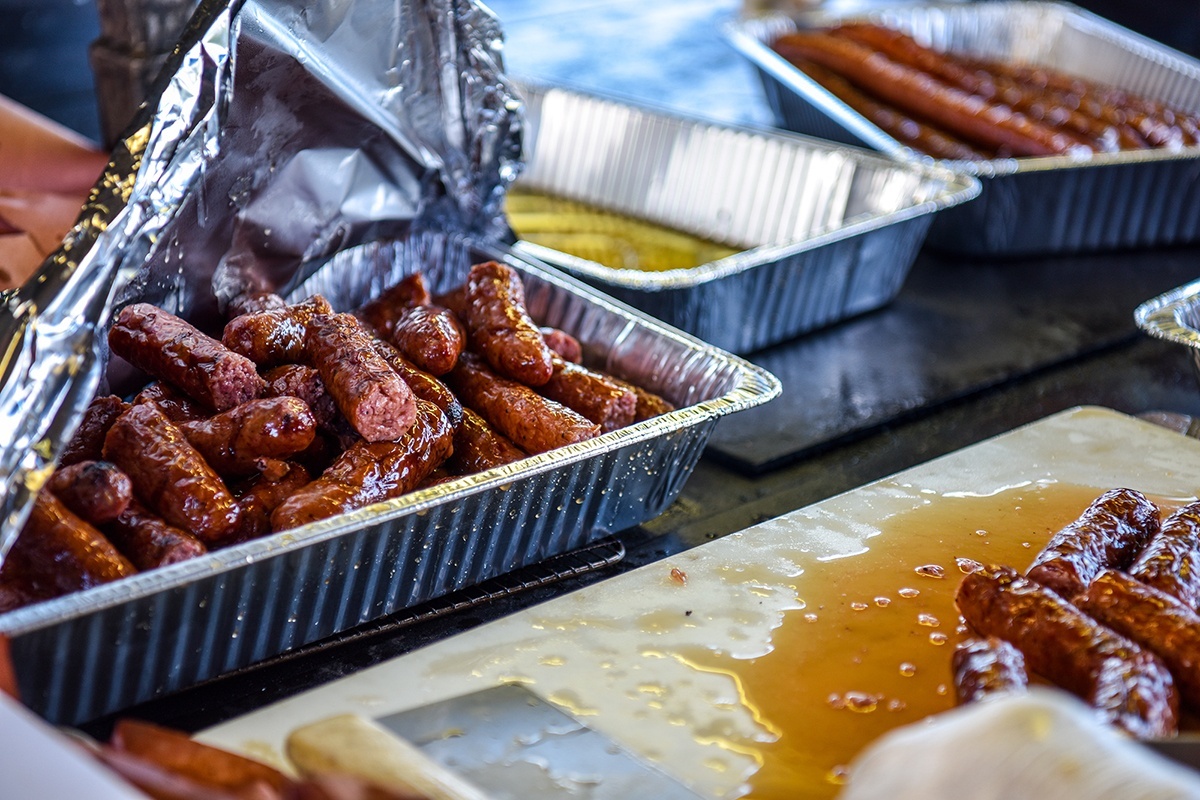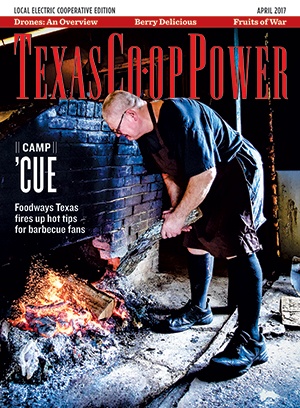Use tools that set you up for success.
Texas A&M University meat science professors Jeff Savell and Davey Griffin encouraged us to buy tools that would help ensure the best results. Pros rely on their hard-won knowledge (as in, gauging doneness by touch), but most of us need a surface-mount probe for the most accurate measure of temperature inside the smoke, an injector needle for marinating chickens, and a thin, pliable boning knife for trimming fat from larger cuts like brisket.
Pick the proper marinade.
Marinades aren’t just about flavor. They affect the cooking process by making meat more tender and juicy, and they can improve the final texture of the meat. Consider the specific cut that you’re cooking. Your desired result will direct you to use either an acid-based marinade (with vinegar, citrus or tomato) or an enzyme-based marinade (using buttermilk, yogurt or papaya/papain). Both tenderize meat but differ in how they react during the cooking process.
Acid-based marinades work well for tender cuts such as bone-in pork chops and tenderloins because they don’t require as much soaking time. Enzyme-based marinades are better suited for larger muscles with more connective tissue to break down, such as pork and lamb shoulders.
Don’t judge a cut of beef by its label alone.
Although “prime” is the industry standard for the best meat, a cut of “choice” can be just as well-marbled. Look past the grading and inspect the meat yourself. Chances are, if it has a rich color and plenty of marbling, it will be delicious.
Grazed and confused.
Don’t expect consistent results from grass-fed beef, Griffin says. It doesn’t have the great equalizer of a finishing feed, so meat from different cattle can have varying tastes. Grass-fed beef lacks the traditional layer of white, creamy exterior fat that is the result of approximately 100 days on a high-nutrition corn diet.
Choose the right wood.
Although different types of wood (mesquite, oak, pecan or fruit) offer various nuances, regional wood preferences historically reflect what’s readily available. Franklin Barbecue in Austin uses post oak because it burns hot and clean, and because it is most available in Central Texas. What’s more important is using wood that’s properly aged—for at least 6–9 months. Green wood produces dirty smoke that can make meat bitter.
Become a smoke charmer.
Charcoal produces heat, not smoke, so you’ve got to maintain a steady fire that produces clean smoke.
You’ll know you’re on track when you see a flame and the logs are being slowly consumed. Your goal is to create a clean, white smoke and avoid black smoke.
Bryan Bracewell, owner of Southside Market & Barbecue in Elgin, says he knows how the smoked meat at his restaurant will turn out from the smoke
billowing from the chimney. If it’s black, there’s a chance that his cooks have used green wood or dampened down the fire too much. He also notes that you can create bad smoke from dry wood if you don’t ventilate properly.
Tips to improve your smoke.
Use smaller chunks of wood in smaller smokers. Don’t go for quick results. The pros stress that impatience and adding too much firewood to the smoker will get you in trouble.
There’s no shame in an oven finish.
The “smoke ring” is the pink layer of meat just under the outside “bark,” and the development of a smoke ring ends at 140 degrees. Once the meat reaches that temperature in the smoker, you’re not losing anything by wrapping the meat in butcher paper and finishing it in the oven.


